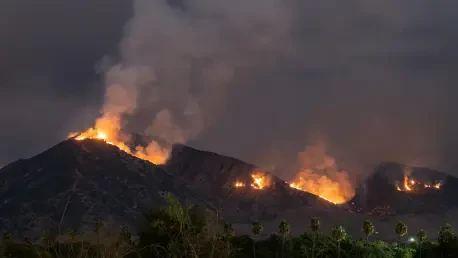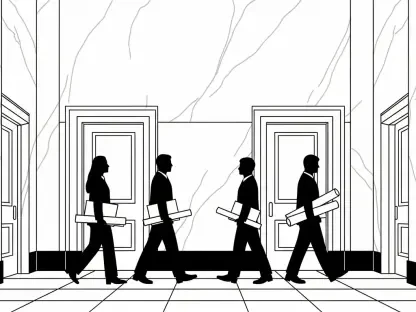California’s recent legal developments regarding the FAIR Plan insurance scheme paint a picture of cautious optimism among homeowners seeking protection against wildfires. Originating from a lawsuit filed in 2021 by Jay Aliff, the case has brought significant attention to the challenges homeowners face post-wildfire—a widespread issue as wildfire frequency and intensity have surged. Compounded by the reluctance of private insurers to cover high-risk areas, homeowners have been left grappling with soaring insurance premiums and insufficient coverage. The court’s decision emphasizes the legal and moral obligation of insurers to recognize all legitimate claims, paving the way for future fairness and accountability in wildfire-related claims.
Legal Developments in the FAIR Plan Case
Smoke Damage Claims and the Insurer’s Obligation
The controversy surrounding the FAIR Plan, a last-resort insurance avenue for homeowners, has been exacerbated by its practice of denying smoke damage claims unless damage was visible and verifiable without technical aids. With Judge Stuart M. Rice’s ruling against this practice, attention has shifted toward advocating for fair treatment of policyholders. The ruling, aligning closely with the California Department of Insurance’s stance, underscores the importance of reconciling insurance provisions with the realities faced by wildfire victims. Highlighting these issues is crucial, given that many homeowners suffer significant financial and health-related repercussions due to smoke exposure, including risks associated with benzene.
Homeowners, previously at a loss to validate claims due to the absence of standardized environmental testing methods, may now find themselves better equipped in negotiations with insurance providers. Judges recognizing the connections between health hazards and environmental damage further emphasize the moral imperative for insurers to honor their liability commitments. Furthermore, this case spotlights the critical need for insurers to acknowledge all aspects of wildfire damage, not merely the visible or easily measurable, as part of their coverage responsibilities. By clarifying insurers’ obligations, this ruling aims to provide a more balanced framework addressing prior inequities in smoke-related insurance claims.
Shifts in Policy and Insurance Industry Accountability
In response to the court’s ruling, the FAIR Plan has undertaken revisions in policy language, aiming to align firmly with current legal standards, thereby ensuring equitable coverage moving forward. This shift is not merely a matter of policy compliance but represents a larger movement within the insurance sector. Insurers are increasingly under pressure to embrace more transparent, fair, and comprehensive approaches in their dealings with policyholders, especially in response to growing environmental challenges. This broader awareness forces the industry to reconsider its stance on risk management and policyholder protection, especially as climate change exacerbates the intensity and frequency of wildfires.
The narrative surrounding this case reflects a pivotal moment where industry practices are being recalibrated to correspond more accurately with the lived realities of those affected by wildfires. There exists a recognition that adequate insurance coverage is an essential tool for resilience in an increasingly climate-vulnerable world. The reforms prompted by the legal ruling aim to safeguard not just financial interests, but broader societal welfare, urging the industry to reevaluate the traditional norms of fault and risk assessment. In this evolving landscape, understanding and cooperation between consumers, regulators, and insurers have become more critical than ever.
Rethinking Insurance and Environmental Responsibility
The Intersection of Climate Change and Insurance Practices
The revised approach by the FAIR Plan in response to the legal ruling marks a crucial junction in acknowledging climate change’s ongoing impact on insurance practices. As wildfires continue to wreak havoc across the state, insurers are urged to reconsider their roles and responsibilities in mitigating and adapting to environmental risks. This phenomenon underscores the changing dynamics in the insurance marketplace, where covering environmental hazards and adjusting risk assessments are vital components of policy formulation. Legal decisions like the one in California elevate the discourse around the insurer’s duty to offer comprehensive protection amid evolving environmental conditions, reinforcing the idea of collective responsibility.
Shaping a future where insurers proactively address environmental issues requires concerted efforts beyond mere policy adjustments. It necessitates a collaborative endeavor among stakeholders to deliver innovative solutions in evaluating and managing emergent risks tied to climate change. The industry must foster adaptability and resilience in its frameworks, cultivating an atmosphere of shared learning and accountability that extends beyond traditional approaches to managing wildfire-related damages. This dynamic interaction, underscoring partnerships between insurers and affected communities, can become a foundation for more robust insurance practices adept at handling a wide range of environmental challenges.
Future Outlook for California Homeowners
California homeowners now find themselves at a pivotal point, benefiting from judicial decisions advocating for fair protection against the escalating threats posed by wildfires. As insurers begin to adopt policies in line with these rulings, the outlook for those in high-risk areas could shift significantly. With the industry’s gradual embrace of more inclusive and equitable coverage options, there arises an opportunity to rethink strategic approaches to household protection in environmentally sensitive areas. This evolution in insurance practices draws lessons from recent cases, helping shape new norms that prioritize comprehensive protection, environmental awareness, and equitable policyholder treatment.
In the face of ever-evolving environmental challenges, such legal developments bring hope for the future by holding insurers accountable and urging them towards more responsive risk management strategies. As California continues to grapple with wildfires, these changes not only enhance protection for homeowners but also serve as a beacon for other states confronting similar threats. By prioritizing the alignment of legal frameworks, insurance practices, and environmental realities, the path forward demands ongoing vigilance, innovative thinking, and community partnerships to shield homeowners from nature’s unpredictable forces.
A New Era of Insurance and Environmental Accountability
California’s recent legal developments concerning the FAIR Plan insurance scheme bring a sense of cautious optimism to homeowners searching for wildfire protection. This legal move stems from a lawsuit initiated by Jay Aliff in 2021, casting light on the hurdles homeowners endure after wildfires—a concern amplified by the increasing frequency and severity of such fires. The situation worsens due to private insurers’ hesitance to provide coverage for high-risk regions, leaving homeowners to contend with skyrocketing insurance premiums and inadequate coverage options. The court ruling underscores insurers’ legal and ethical duty to acknowledge all rightful claims, setting the stage for enhanced fairness and accountability in wildfire-related insurance matters. This decision is a step forward for homeowners navigating the difficult terrain of insurance claims in a state plagued by destructive wildfires, potentially reshaping the landscape for those affected in the future.









